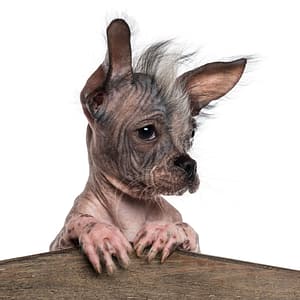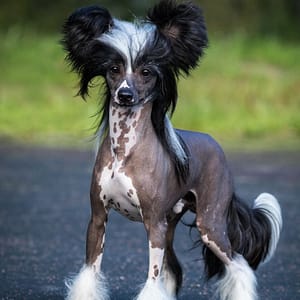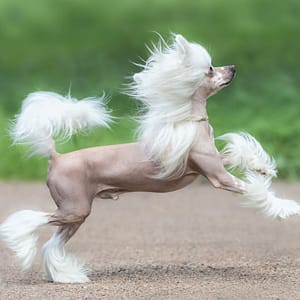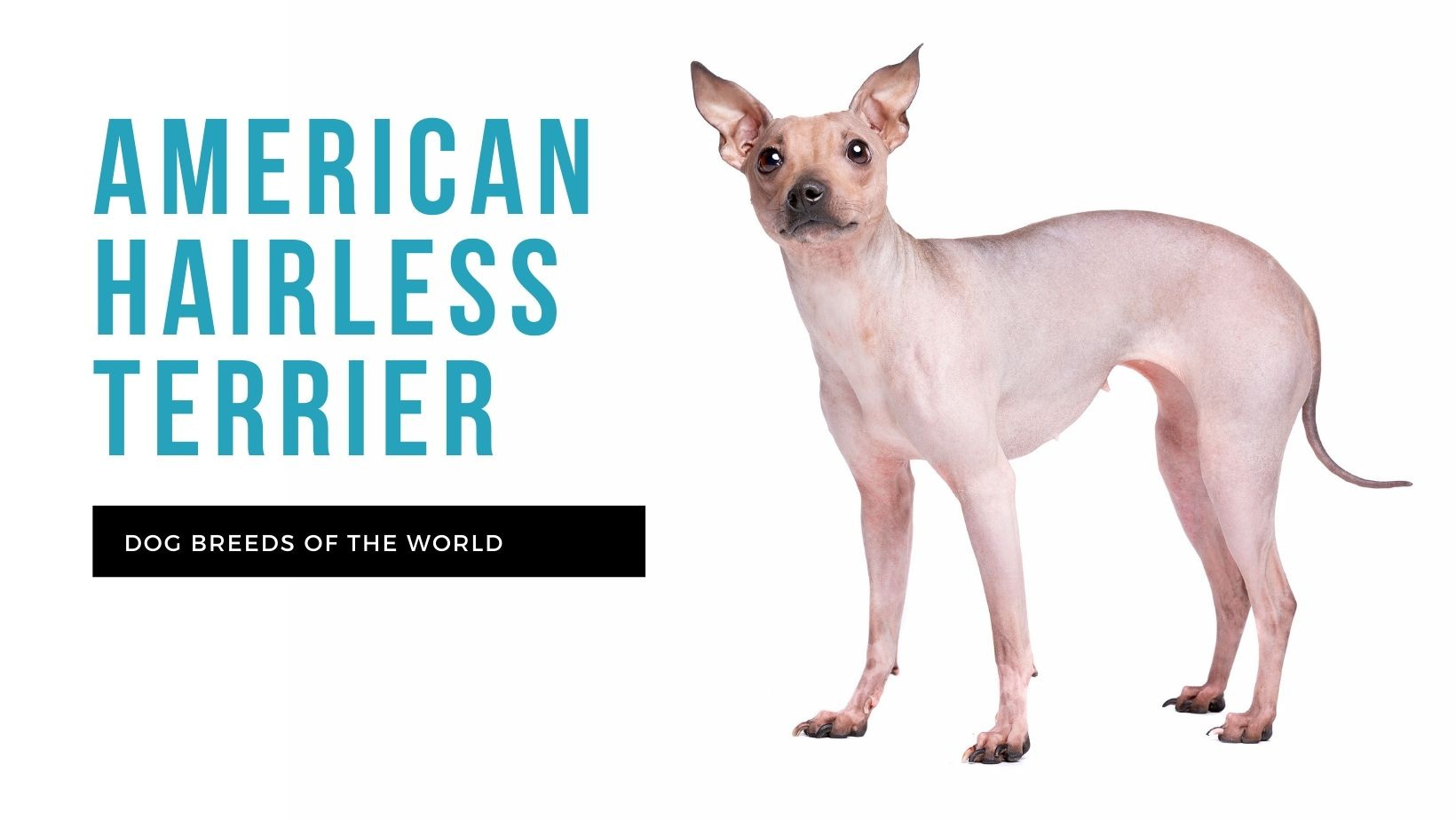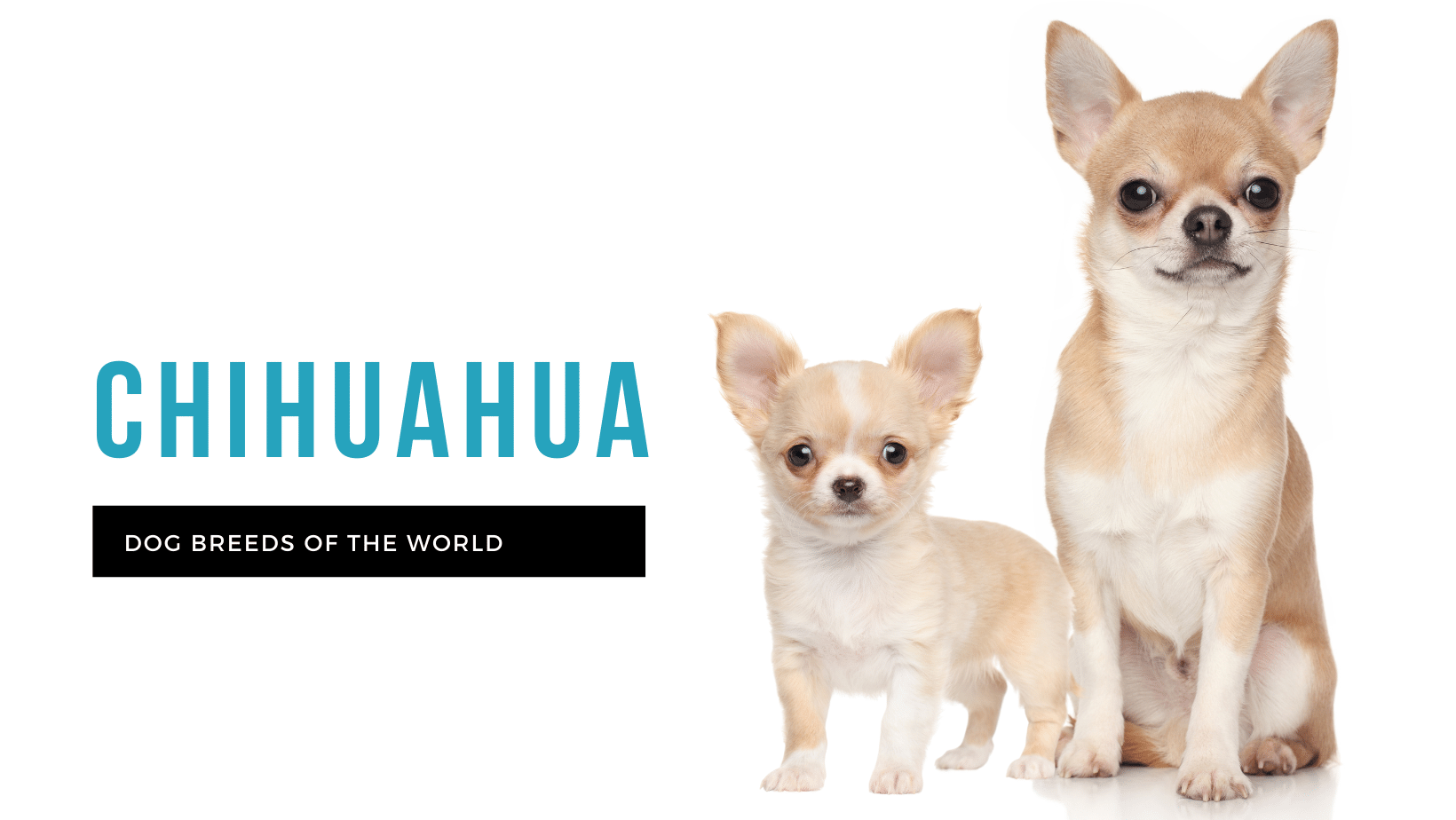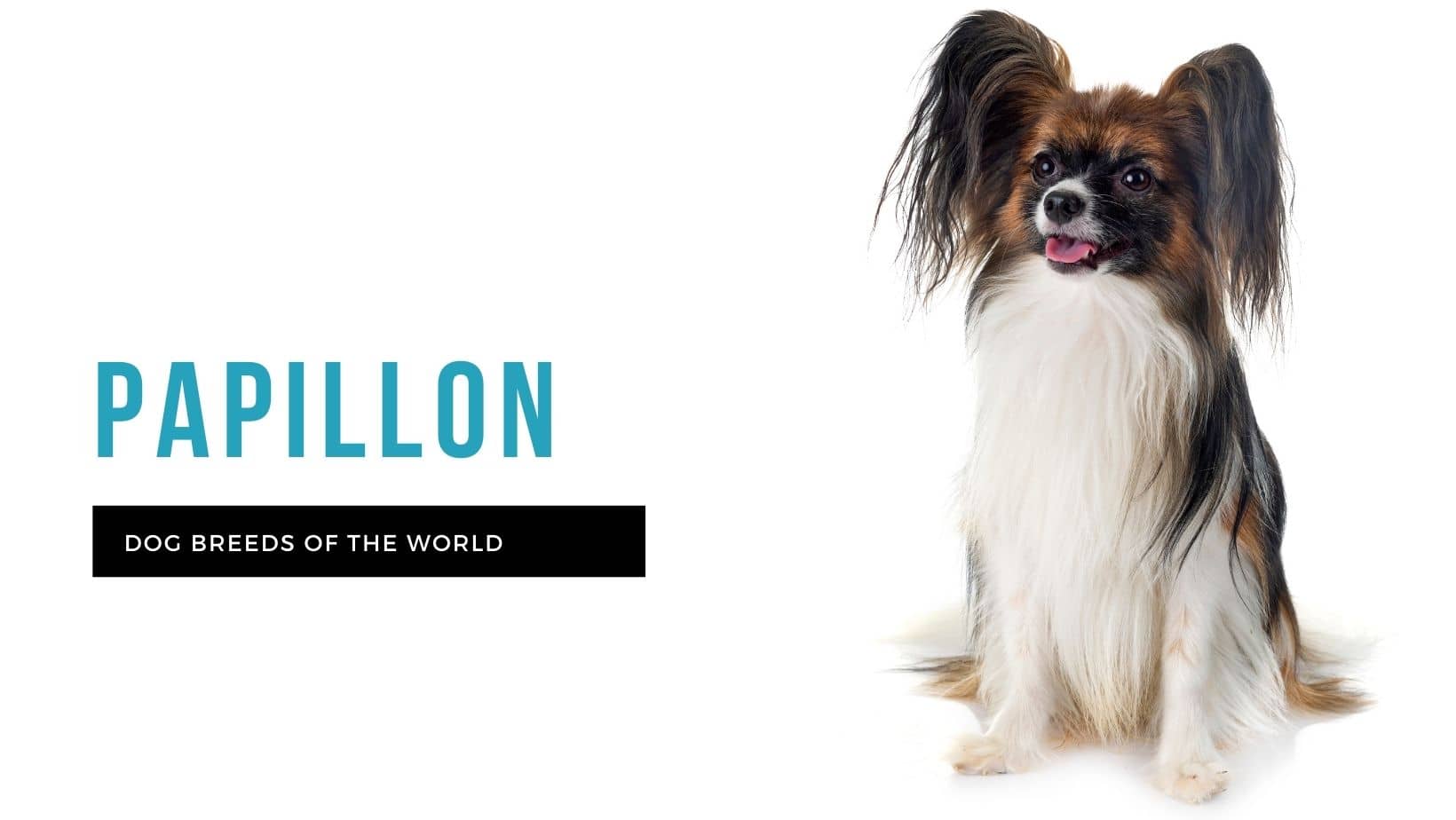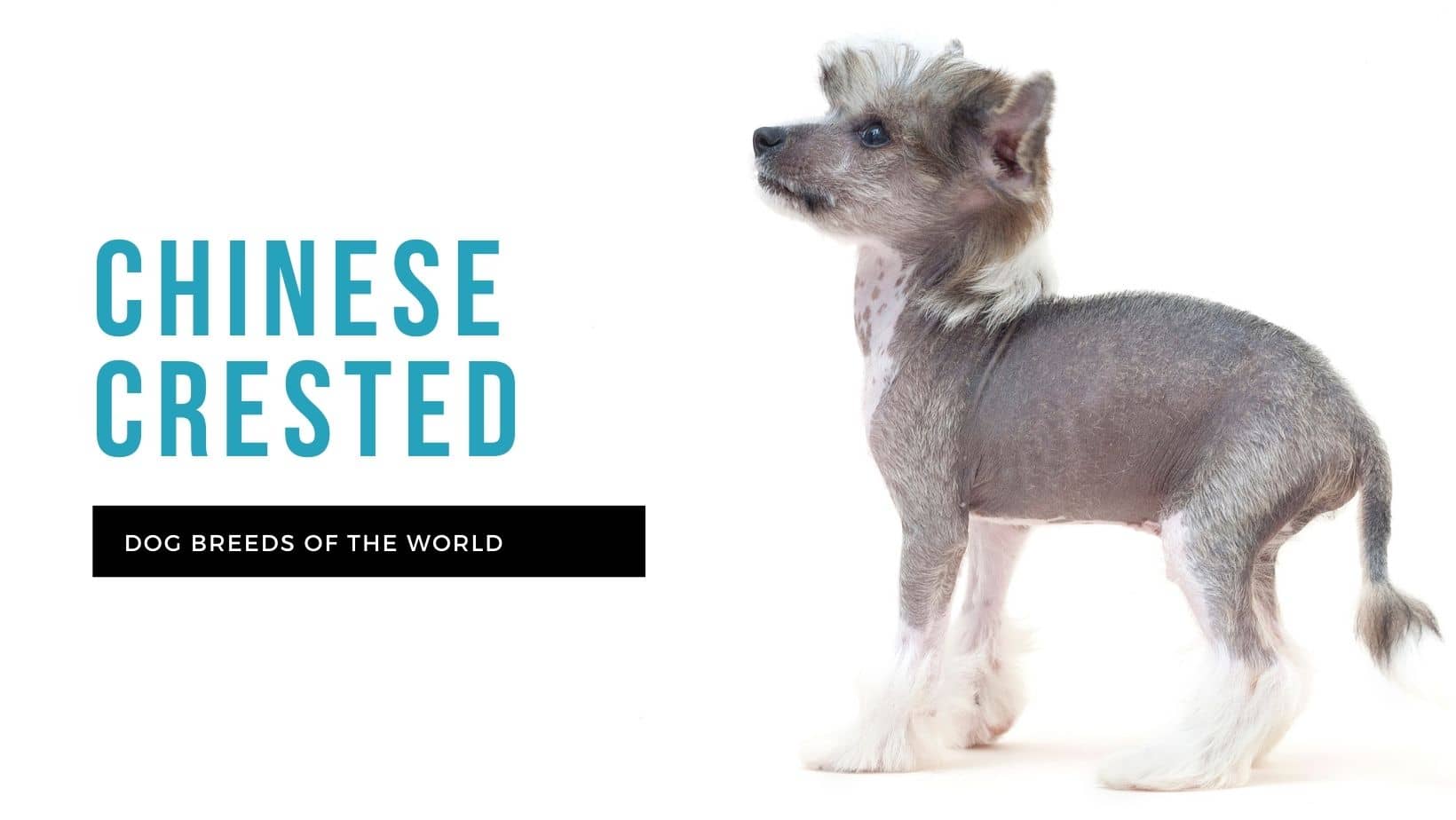
The Chinese crested is a one-of-a-kind dog breed that is as unique in personality as he is in looks. This is a dog who owns people – not the other way around! He may be quite high maintenance when it comes to his skincare and grooming, but his friendly, attached personality more than makes up for it.
A Toy dog, the Chinese crested is a small, semi-hairless and head-turning companion who is playful and elegant, and very devoted to his family. He does not need a lot of exercise, and he loves his family’s children, as long as they are gentle with him.
History
The Chinese crested dog got his name from the country in which he was most widely developed and bred down to toy size, but his origins go way further back and way beyond his namesake. It is thought that there is a common ancestor between the Chinese crested and the Mexican hairless dog, and there could even be some Chihuahua in the mix. It has also been speculated that the African hairless dog could be a possible ancestor to the Chinese crested, but since this is a very well-travelled breed, it’s difficult to confirm.
Assuming the Chinese crested originated in Africa and was taken to China, it was in China that his known history began. Over many generations of breeding, the Chinese crested became smaller and was developed for the task of exterminating rodents aboard Chinese trading ships in as early as the 16th century. His ultimate goal was to dispatch disease-bearing rats so that the ship’s crew and the people they traded with remained safe. So famous was the little dog for this important task that he became a currency in and of himself and was traded around the world. Each country that acquired a Chinese crested developed its own local flavour of the breed.
The Chinese crested had taken the world by storm by the mid-1800s and even began to appear in famous European paintings. He also featured in an American dog show in the late 1800s and caught the attention of journalist and writer Ida Garrett. This interest turned into a 60-year devotion to the breed. In the 1920s, famous Chinese crested breeder Debra Wood entered the picture and contributed to Garrett’s extensive writing and records of the breed. It was only a century after Ida Garrett’s discovery of the Chinese crested that the American Chinese Crested Club was established, in 1979. With such a long history, it took many years for an acceptable breed standard to be established, so the Chinese crested dog was only accepted into the American Kennel Club’s (AKC) studbook in 1991.
Chinese crested puppies are very scarce in South Africa, but the breed is, ironically, even more rare in China. The Kennel Union of South Africa (KUSA) breed standard only covers the hairless and semi-hairless type – not the Powderpuff (haired) breed.
Temperament
The Chinese crested dog breed is lively, though not incredibly energetic, and very affectionate with his family. He is wary of strangers until he gets to know them. While once employed as vermin control aboard ships and in harbour ports, the modern day Chinese crested is no longer a working dog and is very much a velcro dog of the ultimate companion kind.
He moves gracefully with a relaxed yet elegant motion, has no odour and the tufts of hair on his head, legs and tail present him as the ideal companion for someone who would otherwise be allergic to hairier dogs. This is a great trait because he needs to be very close to his humans, spending time with them in play mode and in chill mode.
Health
The Chinese crested dog has some interesting DNA – the hairless variety is heterozygous (one gene has the DNA for hairlessness while the other one doesn’t), and hairlessness in particular is an incomplete dominant trait. If a puppy had two of the same genes for hairlessness, it would never develop past the zygote stage and would be reabsorbed into the mother’s body. If a puppy has two recessive genes, it will develop into the Powderpuff variety. Hairless cresteds and Powderpuffs can be born in the same litter. That being said, a link has been found between the dominant gene for hairlessness and the crested’s propensity for missing teeth. This is not a fault, but simply an abnormality from the effect of the crested’s most noticeable trait.
The Chinese crested is also susceptible to:
-
- Eye problems – like progressive retinal atrophy (PRA), glaucoma, primary lens luxation (PLL) and keratoconjunctivis sicca – or dry eye.
- Orthopaedic problems – such as Legg-Calvé-Perthes disease and patellar luxation (slipped knee).
- Epilepsy
- Allergies
- Autoimmune diseases – while not common, any potential autoimmune diseases must be pinpointed and the dog must not be bred.
Exercise Requirements
While the Chinese crested dog is not an exercise-intense dog, he can be quite athletic if it’s required of him. He has been known to run surprisingly fast and jump surprisingly high – escaping over fences and refusing to be caught. These impulses can be successfully channelled into canine sports like agility training. Usually a daily short walk or two as well as some playtime in the yard will keep a Chinese crested healthy and fit. If he’s going to be in the sun, though, he should be dressed in light clothing or be covered in doggy sunscreen.
The Chinese crested may not be one of the world’s most intelligent dogs, but he does learn easily if the right amount of positive reinforcement is used with absolutely no harsh tones or frustration. He can be quite stubborn, but is also very sensitive and must be trained gently and thoughtfully. Any harsh words or treatment can make him turn away from his trainer completely and refuse all future cooperation.
The Chinese crested dog may have the tendency to be timid. This coupled with his general mistrust of strangers can make him a bit antisocial, so it’s vital that he be socialised with many people and other small animals as often as possible. This will help to build up his self-confidence and bring out a friendlier personality.
Grooming Requirements
Despite the Chinese crested being a hairless or semi-hairless dog, this doesn’t automatically make grooming quick and easy. Gentle grooming of the hair on his head, tail and feet is required, and special attention must be paid to his skin to ensure it remains healthy and moisturised. An exposed skin puts the Chinese crested at risk of allergies, skin irritation and especially sunburn. He needs a skin treatment that’s in line with his skin type – dry, oily or sensitive – and it’s critically important that he be treated with sunscreen before going out in the sun.
Brush his teeth regularly and trim his toenails once or twice a month. Chinese crested dogs have relatively long nailbeds/quicks, so nail trimming needs to be done very carefully to avoid injuring his toes.
Ratings
Friendliness to other pets
Friendliness to strangers
Behaviour towards children
Statistics
| Size |
Small |
| Type |
Toy Group |
| Average adult weight |
5 kg |
| Average adult height |
30 cm |
| Average life span |
12 years |
| Breed family |
|
| Area of origin |
China/Various |
Gallery
Similar breeds


